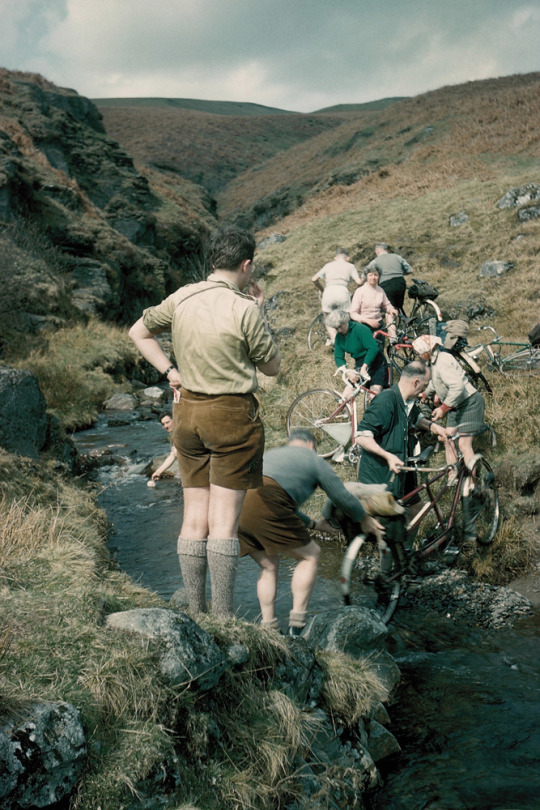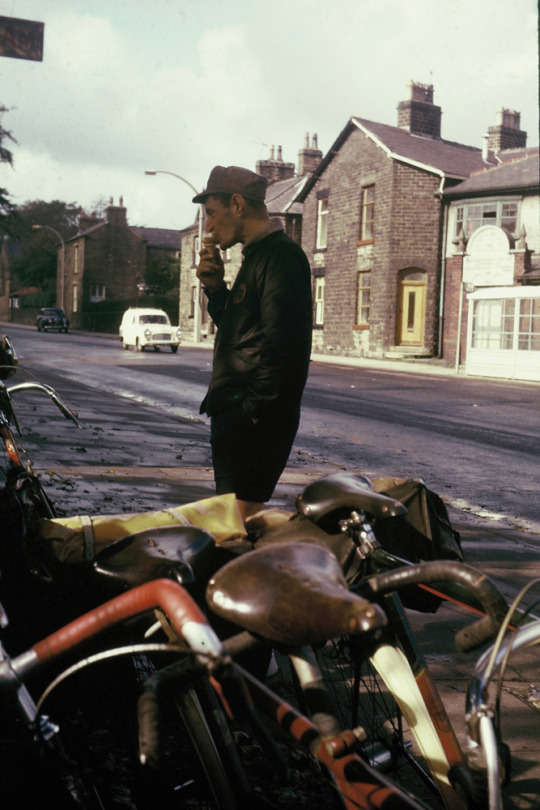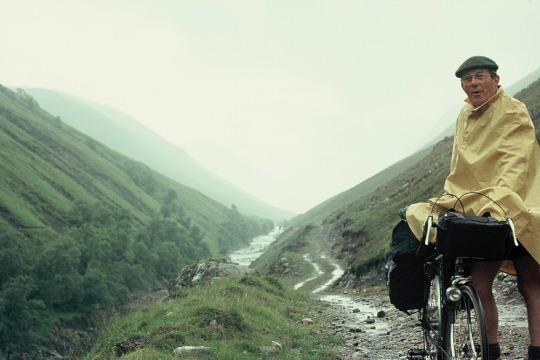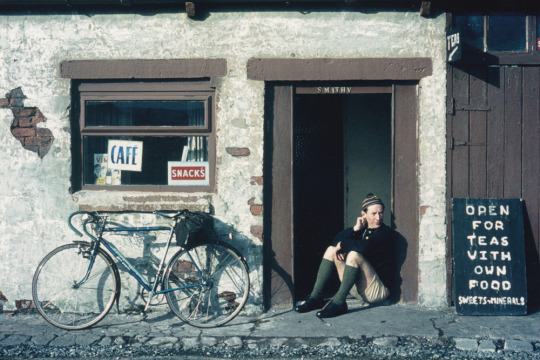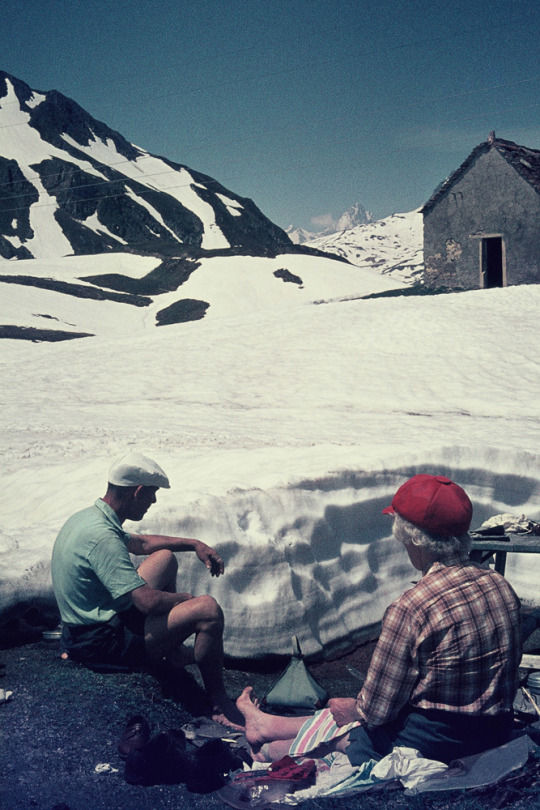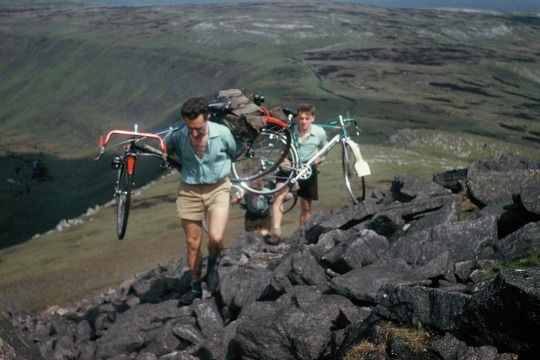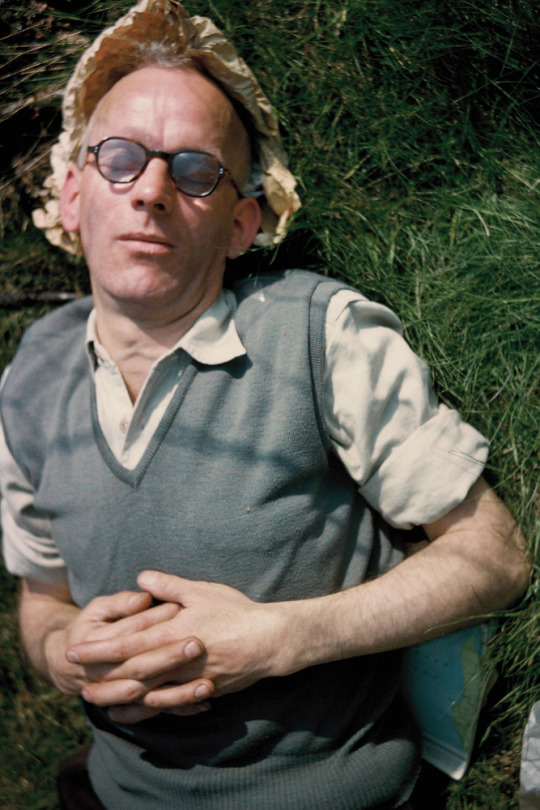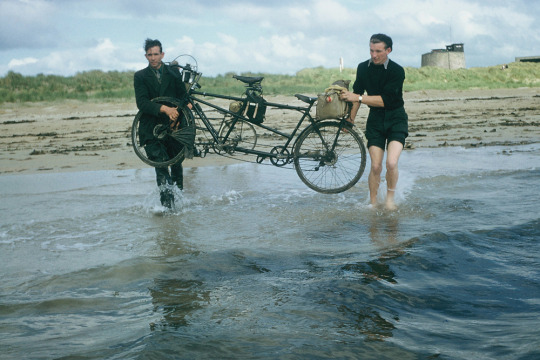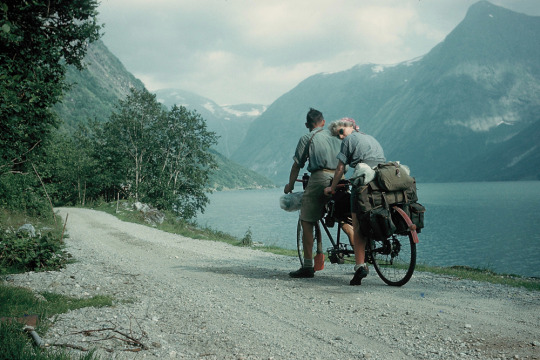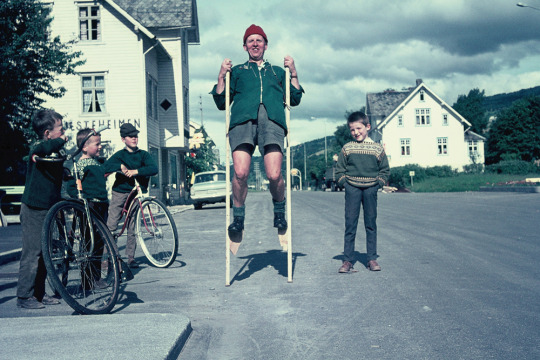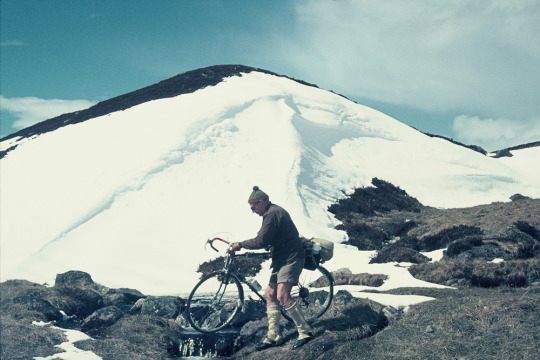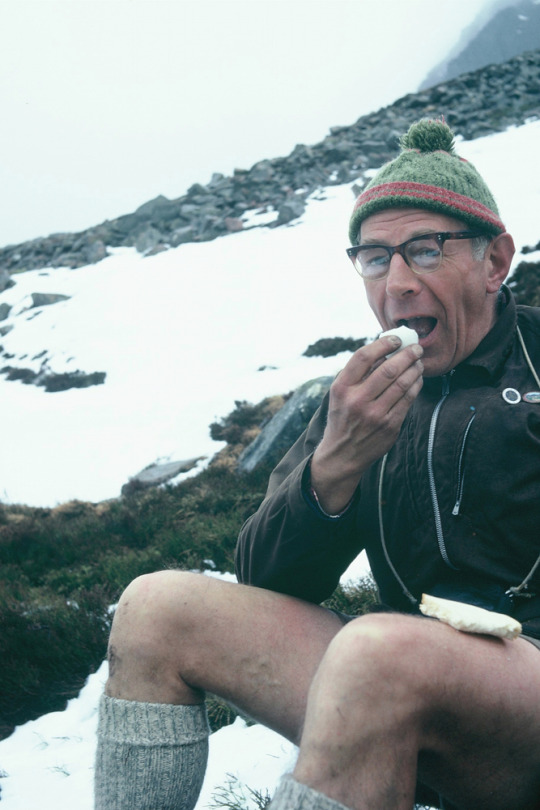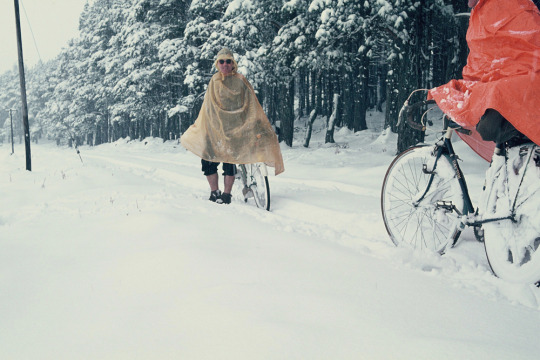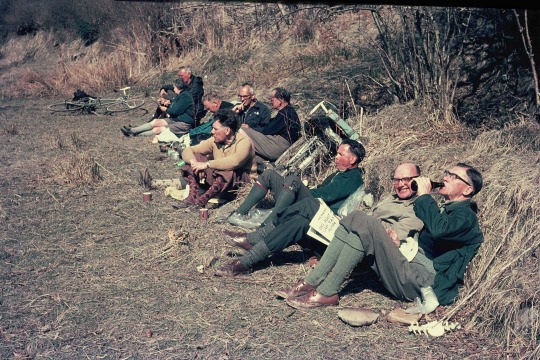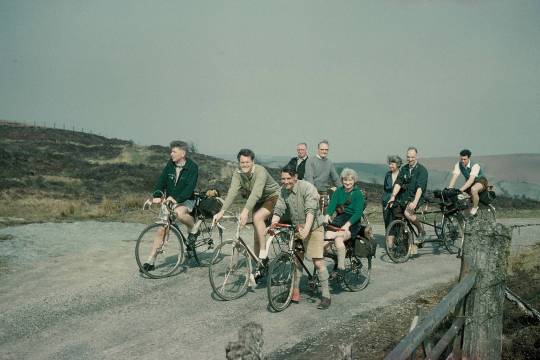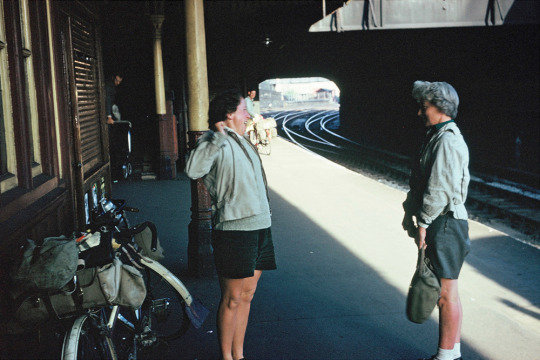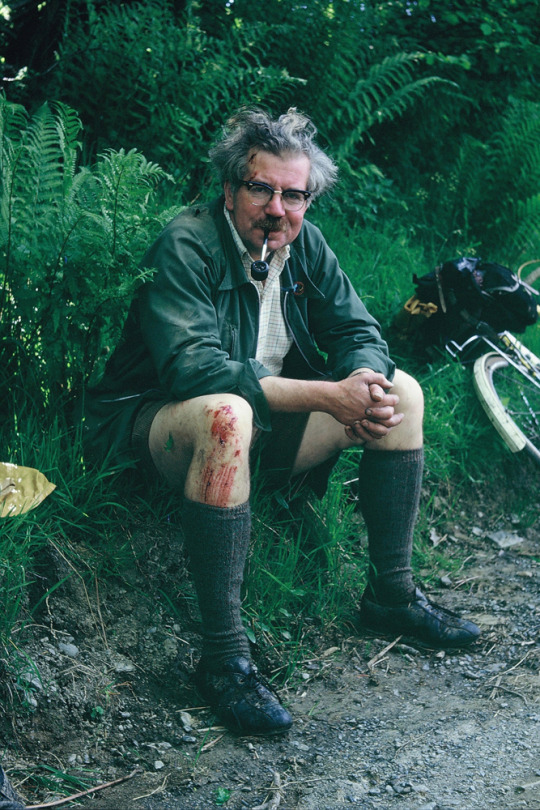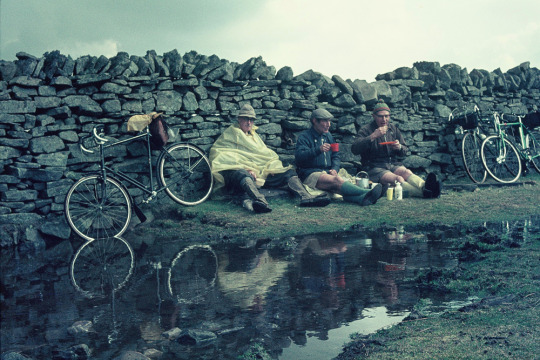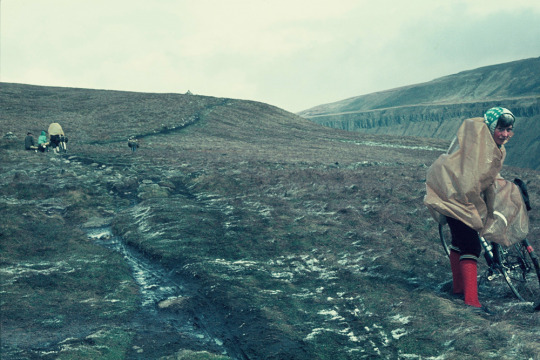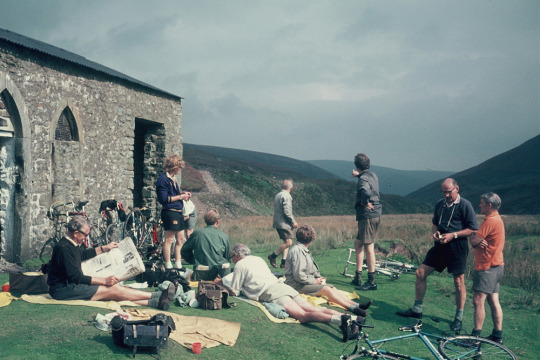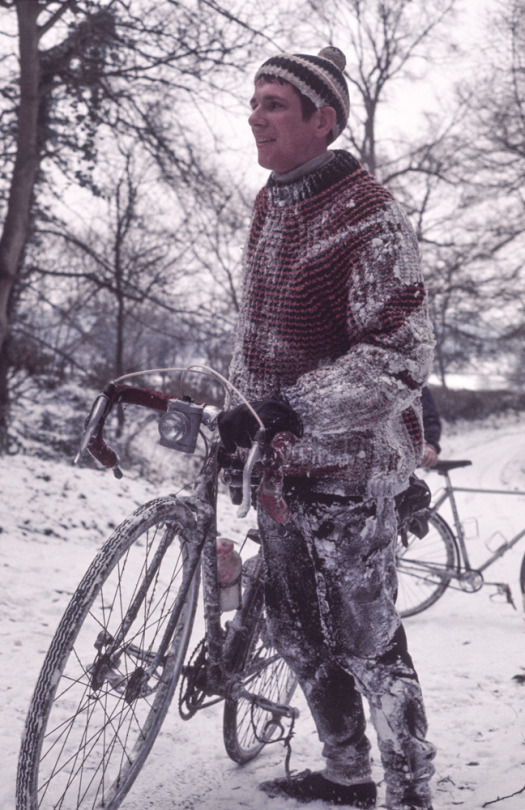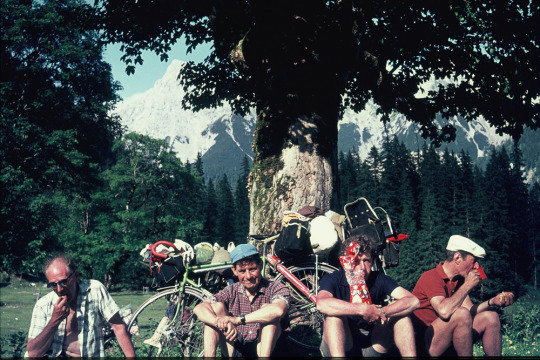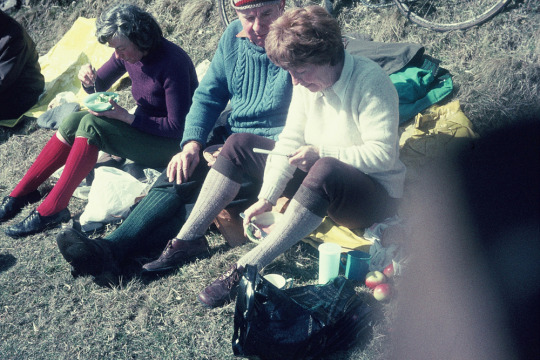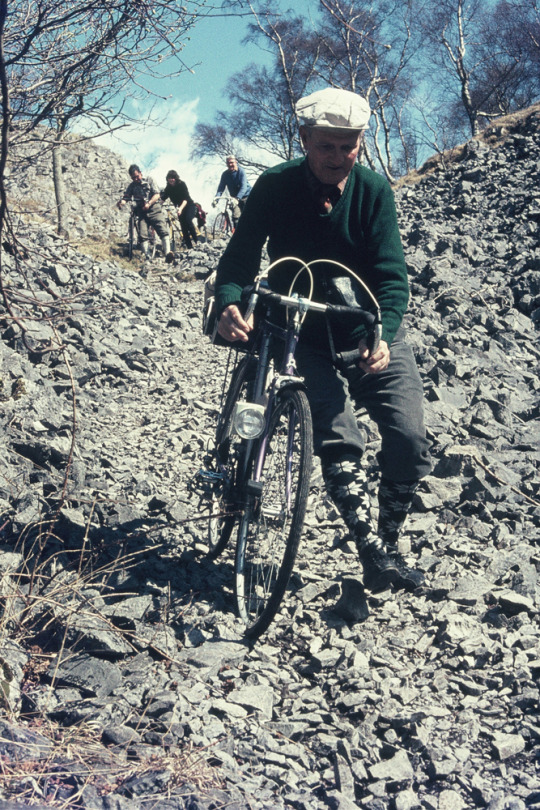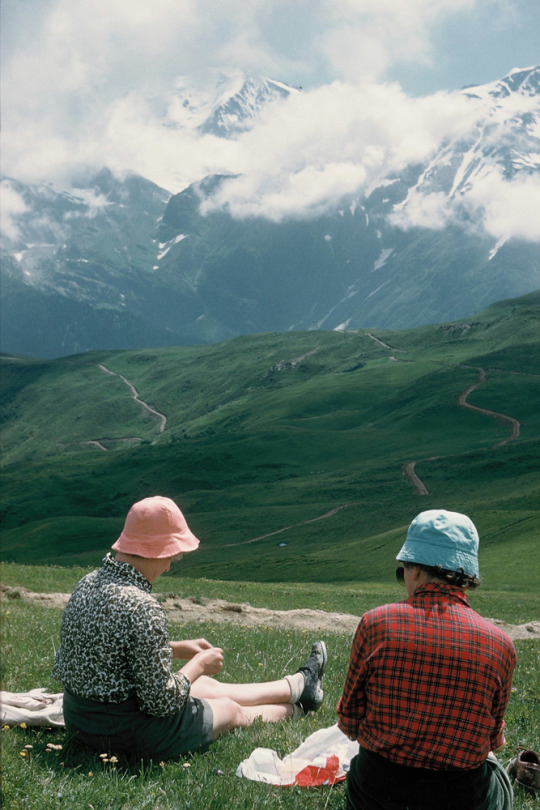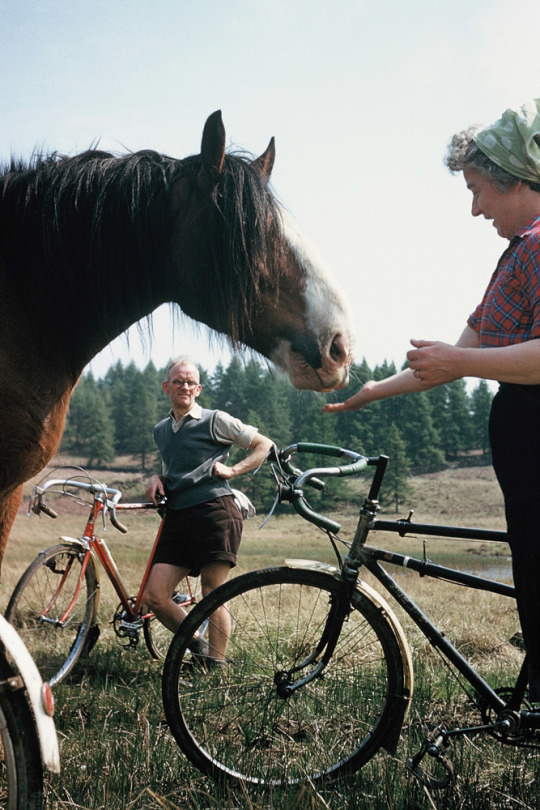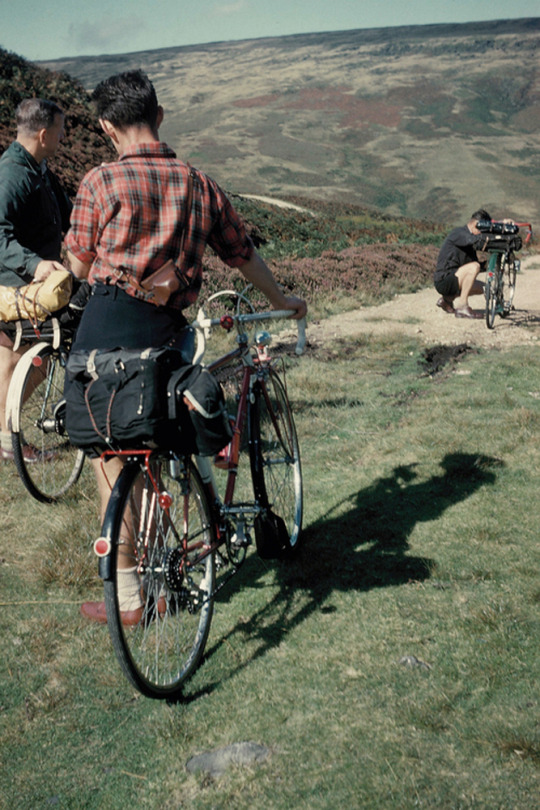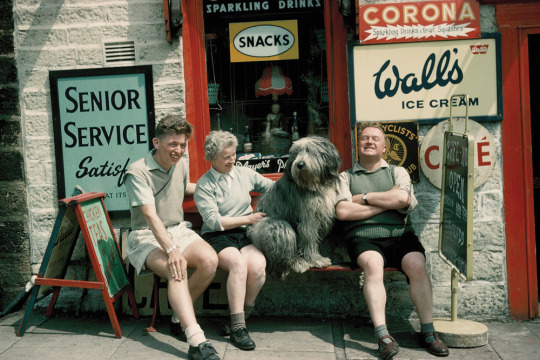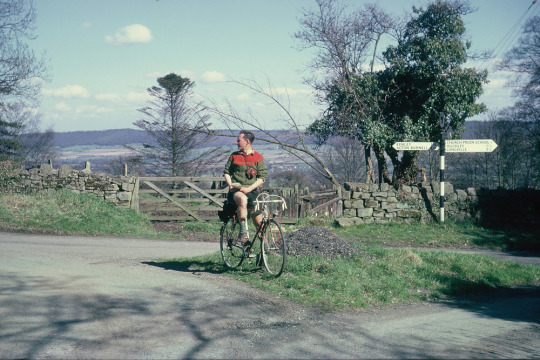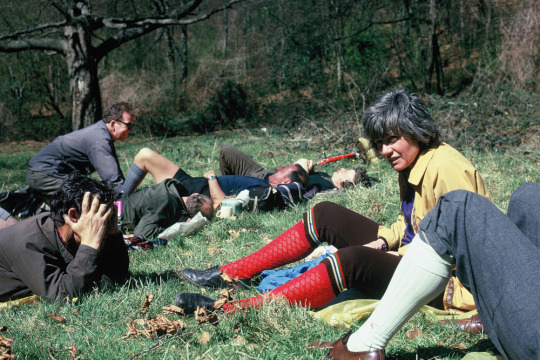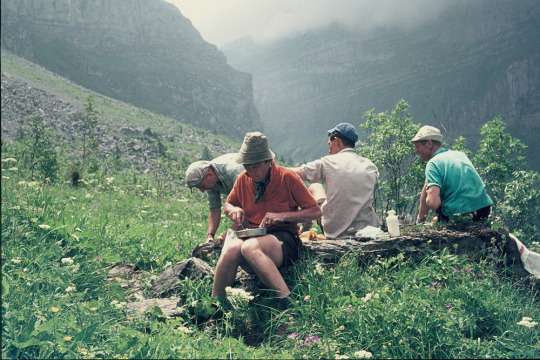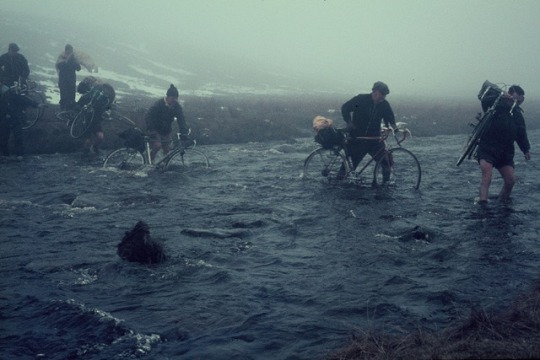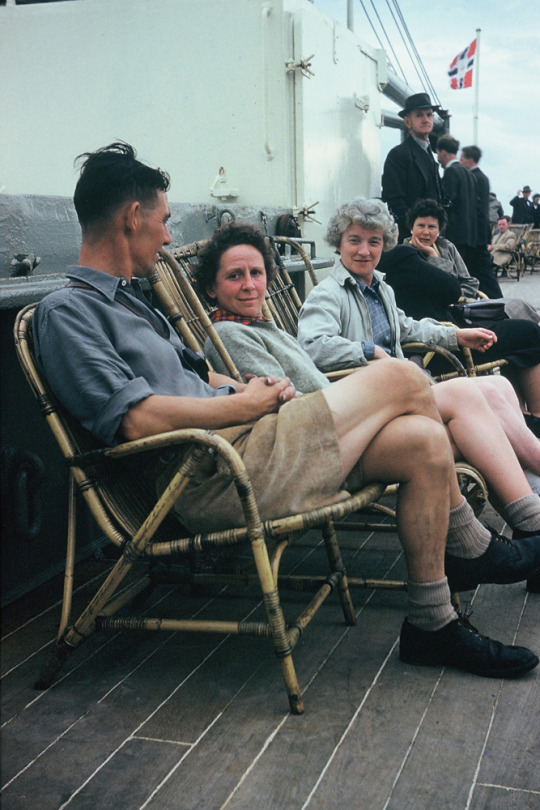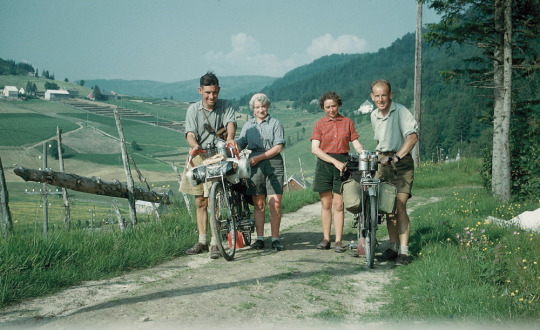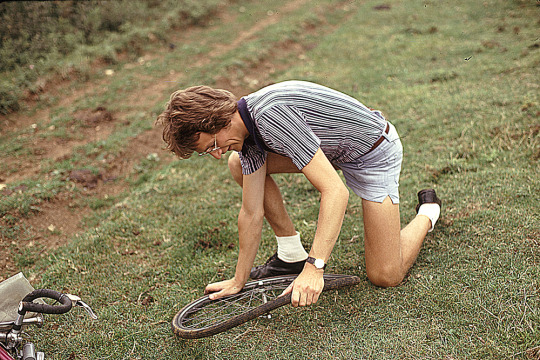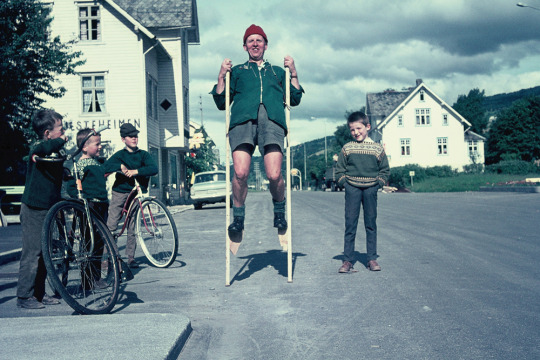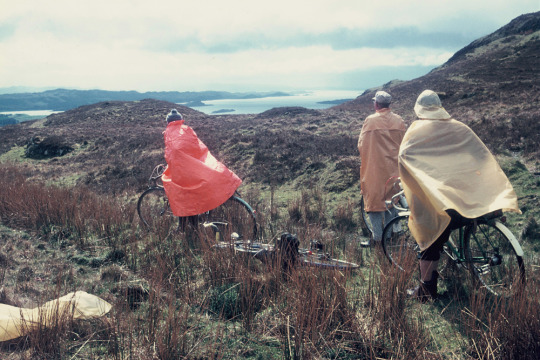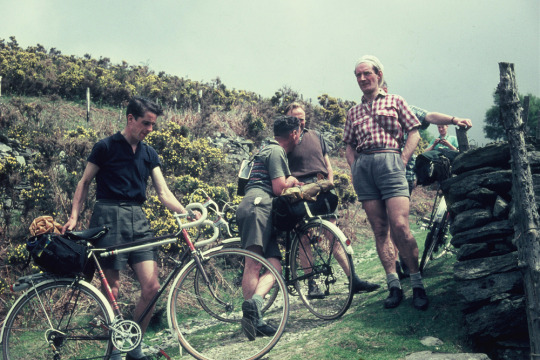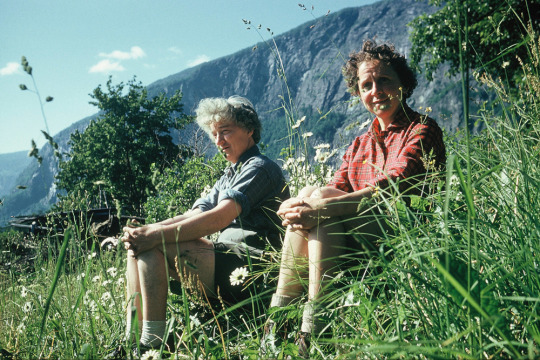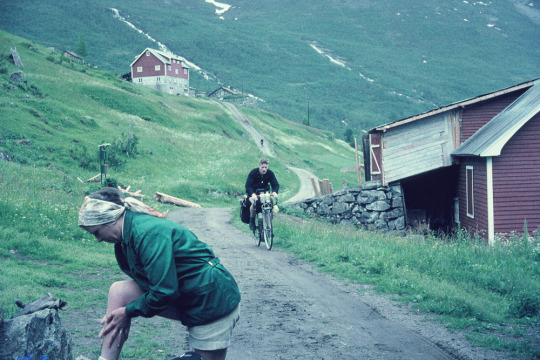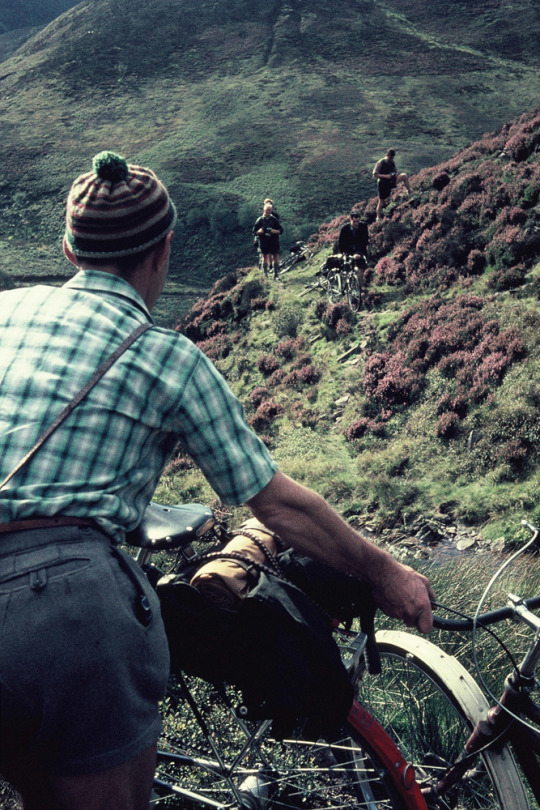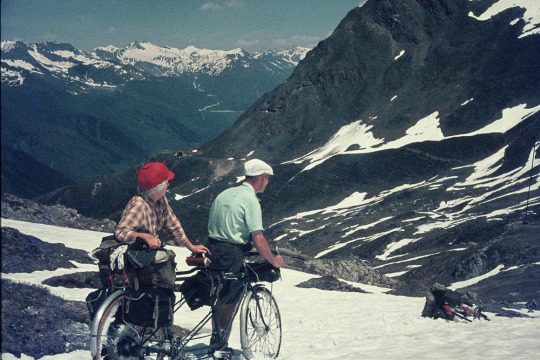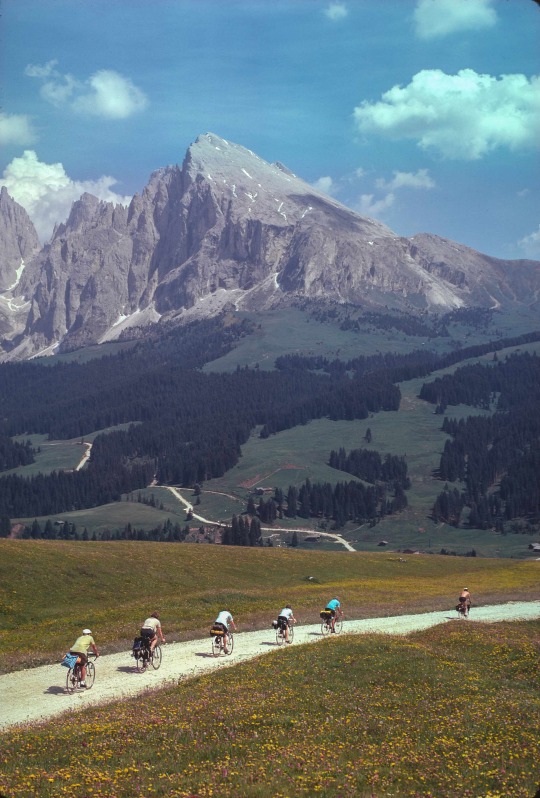
On a Sunday afternoon in May of 1955, a ragtag group of forty people crammed themselves into The Black Swan, a cozy pub in the market town of Leominster, England. They were responding to a letter published in The Bicycle magazine the previous October. Penned by W.H. Paul — a thin, bespectacled man better known to his friends as Bill — the letter asked if the cyclists of the day were only interested in replicating the road-racing feats of Tour de France competitors. Paul, an enthusiast of the great outdoors, wondered if anyone else liked using bikes to explore less trodden paths.
“I have always been a searcher of the remote, wild, and more desolate country, which is to be seen ‘off the beaten track,’” he wrote. “I wonder if the modern lightweight, with its ‘Continental this’ and ‘super that,’ prompts the rider to keep on the billard-table surfaces of modern tarmacs. Nevertheless, I believe there is still a small select circle who love the rough and high ways amongst the mountains of Wales, the Lakes, and Scotland. […] Who then, would care to become a member of The Rough-Stuff Fellowship?”
The response was immediate and positive. A year after the inaugural meeting, the club grew from 40 hardened riders to 160 scattered across the country — and today is 800 members strong, making it the oldest off-road bicycling club in the world. Riders meet on a weekly, if not daily basis to explore every corner of the British countryside and beyond. They shoulder their bikes as they climb up mountains and wade through streams, then hop on them again to ride across rocky dirty paths and through grass-covered fields. “They prefer a far less beaten track – one where no ascent is too steep, no mud too thick, no destination too distant,” Niall Flynn wrote of the group.
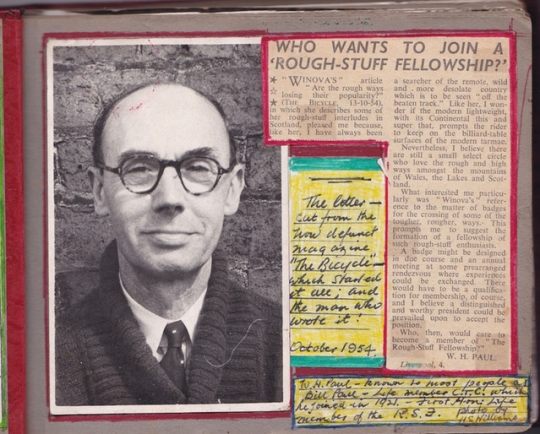

The history of mountain biking often starts during the 1970s, when riders in California and Colorado tinkered with their bikes to adapt them to the rigors of off-roading. But few people know about the British men and women who covered similar terrain with the same bicycles they used to get to work. They rode simple bikes with three or four speeds, Sturmey-Archer gears, and no derailleurs — the last being the L-shaped mechanism you see hanging off modern frames, which moves the chain between the cogs on a rear wheel’s cassette. “This was for the best, really,” says Mark Hudson, the club’s recently appointed archivist. “If you had derailleur at the back, it would have been prone to smashing up against the rocks. Whereas, if you have a hub gear, everything is kept inboard and contained in a shell.”
The Rough-Stuff Fellowship’s early members, however, would have probably appreciated having wider tires. Theirs were thin and designed for smoother paved roads, which meant they felt every bump and crevice when they went off-roading. Not uncommonly, they had to repair their tires when they got bent out of shape mid-adventure. And yet, for this strange band of people, this was somehow all part of the fun. “There is a sense of humor to it, isn’t there?” says Hudson. “I think that’s what people today have latched onto — that contrast between the toughness and the humor. It’s very British.”
In Scotland, there’s a 28-mile hill-pass known as Lairig Ghru, which climbs to a dizzying 3,000 feet and crosses through the central Cairngorms, one of the wildest areas in the country. It’s described as going from Speyside to Deeside (as a sedentary music lover, I’ve only ever ventured to the B-side). Hudson says that it’s a classic Rough-Stuff route. “There’s a drovers’ road, just wide enough for a sheep and cart to go down, but it’s otherwise a boulder field. I think someone calculated that it’s only about 20% ridable, which means you’re spending a lot of your time climbing rocks and shouldering a bike on your back. A lot of walkers don’t even cross it.”
Over the years, members of The Rough-Stuff Fellowship have pitted their bikes against the natural world in the most unlikely of places. They were the first to cross Iceland’s vast interior on a bicycle, completely unassisted, in 1958 (Horace Dall did it first in 1933, but took a boat across the tundra). “It was the first time I had even been out of England. So, everything was new and different to me,” says Dick Phillips, one of the cyclists on that team. Members have also ridden across the French Alps and Swiss mountains. During a world tour, one of the chapters threw in a visit to Mount Everest’s base camp just for the fun of it. “They were the first to reach it by bike,” says Hudson. “The essence is that you can take your bike wherever you want to take it. Rough-Stuff is about a pioneering spirit – just wanting to see what’s over the hills.”

A few years ago, after being appointed archivist, Hudson started scouring for photos, documents, and letters. He struck gold when he came across an unusually large collection: 10,000 slide photos, which were previously owned by founding member Bob Harrison until he passed away. A cabinet maker by trade, Harrison lovingly made thirty-four, felt-lined, oak boxes to house his 35mm slide collection — each box indexed and every photo labeled with the date and location of a ride he took with The Rough-Stuff Fellowship. “That’s the collection that really kicked things off,” says Hudson.
In the end, Hudson gathered a total of 20,000 photos, a small selection of which are being shared on Instagram and will be part of a forthcoming book titled The Rough-Stuff Fellowship Archive. “I live in a one bedroom flat, and I’m absolutely sinking,” Hudson laughs. “Of the 20,000 slides, about 200 made it into the book. Max Leonard from Isola Press and I went through and projected each of the slides on a big screen to figure out which should be included. It was a fun but hard process.”
Scanning the photos, I’m struck by how early members of The Rough-Stuff Fellowship dressed. Instead of cycling specific clothing, they wore the same things they used for work and leisure. They rode in Shetland sweaters and collared shirts, waxed parkas and hooded ponchos, corduroy shorts and long wool socks. Some are also spotted wearing traditional leather shoes. Which makes sense, really, since this was before the boom in cycling technology, where consumers could get highly specialized bike parts and body-hugging Lycra uniforms. Many of the outfits here look like they could have come straight out of a Nigel Cabourn or Barbour lookbook. In the photo above, the man carrying his bike over rocks is wearing what could pass for an LL Bean Norwegian sweater and a pair of corded Engineered Garments shorts.
“Very few things back then were designed specifically for cycling,” Hudson explains. “There was a company called Bertram Dudley and Son that made the Greenspot jacket, which was popular with touring cyclists. That had two slanted zipped chest pockets, two lower hand pockets, and two more pockets at the back, as you’d see on contemporary cycling jerseys. That was the only cycling specific garment, but you didn’t need much else because you weren’t going terribly fast. Wool keeps you warm, and it breathes. Today, people know all these terms for things, but back then, people didn’t have all these options and probably couldn’t even name every part of their bike. They wore what they wore and used what they used.”

In his book Bowling Alone, Harvard professor Robert Putnam details the collapse of American community life. In one of his chapters, he goes through statistics for how civic participation has changed throughout the 20th century – everything from active organizational involvement to club meeting attendance. By any measure, things are the lowest they’ve been in decades. The average membership rate for thirty-two associations in 1997 was about half that of the 1960s, putting the ‘90s rates on par with those during the Great Depression. To the degree that people still participate in civic life, they tend to be through big organizations – ones where they have to do little more than read monthly newsletters and donate money. Putnam writes:
Few ever attend any meetings of such organizations – many never have meetings at all – and most members are unlikely to ever knowingly encounter any other member. The bond between any two members of the National Wildlife Federation or the National Rifle Association is less like the bond between two members of a gardening club or prayer group and more like the bond between two Yankees fans on opposite coasts (or perhaps two devoted L.L. Bean catalog users): they share the same interests, but they are unaware of each other’s existence. Their ties are to common symbols, common leaders, and perhaps common ideals, but not to each other.
The Rough-Stuff Fellowship is one of those rare clubs that bands people together around physical activity. In the archival photos, you can see how all-terrain, sometimes foolhardy rides help build real-life camaraderie and friendships (in his book, Putnam makes a strong case for how military conscription can break down racial and class prejudices, as recruits have to entrust their lives in other people’s hands).
“The club brings together people from all walks of life,” says Hudson. “In the photos, there are some images of Jerry and Elsie, who rode tandem together. They were friends with Bob and Mary, who also rode tandem. Together, they went on multi-week tours. They met through the club and spent thirty years together until Jerry passed away in the 1980s. Their friendship lasted about half their lives.”
I ask Hudson how much someone should expect to spend if they want to take a bike out into the wild like this. “You can spend as little as $150 for a basic road bike or spend the world for the latest gear,” he says. “Fundamentally, you don’t need much. You need two wheels and a sense of adventure, and the second thing is free.” Well, those things along with a Shetland sweater, Nigel Cabourn jacket, and pair of Alden boots. At least if you want to look as stylish as the riders pictured here.
(Special thanks to Iain for tipping me to this story. All photos copyrighted by The Rough-Stuff Fellowship and used with permission. Readers interested in ordering the forthcoming book can buy it directly from Isola Press. It ships June 12th. Hudson says he’s also doing a slideshow presentation with these images as part of a coming book tour. At the moment, the tour is only scheduled for the UK, but readers outside the country can contact him if they’re interested in getting him to add other locations.)

